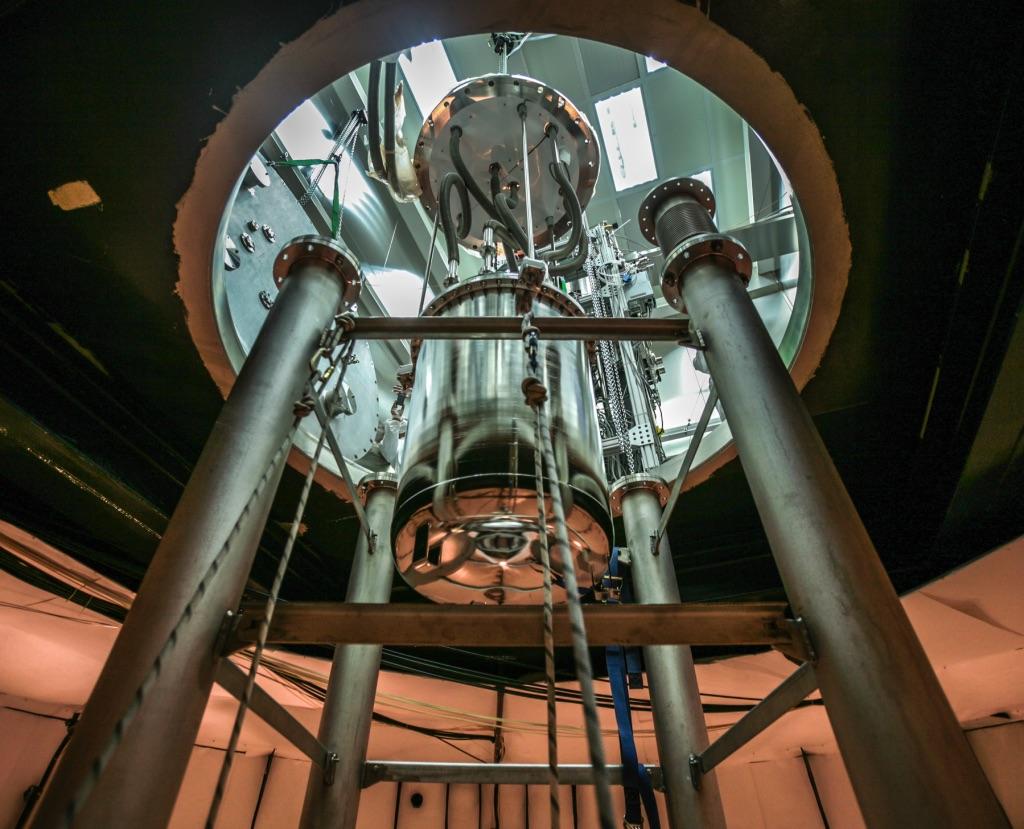The search for dark matter compatible with the search for supernovae
The DarkSide-20k and ARGO experiments, dedicated to the direct detection of dark matter, are also proving to be suitable for the detection of cosmic neutrinos, and in particular neutrinos emitted during core-collapse supernovae. The result presented here reviews the sensitivity of these dark matter detectors in the search for neutrino events from supernovae.

DarkSide-20k and ARGO are future liquid argon detectors dedicated to the direct search for dark matter. In particular, their aim is to detect interactions between argon nuclei and ‘Weakly Interacting Massive Particles’ (WIMPs). WIMPs are hypothetical candidate particles for the explanation of dark matter, which remains one of the great mysteries of modern cosmology. Indeed, dark matter constitutes about 27% of the total energy density of the Universe, in contrast to ordinary In these experiments, the energy of a WIMP is deposited in the argon volume by elastic collisions. This recoil energy accumulated by the argon nuclei produces scintillation events specific to the nature of the WIMP. Photodetectors with high temporal resolution capture these signals and allow discrimination of these events with those of the radioactive background.
In these experiments, the energy of a WIMP is deposited in the argon volume by elastic collisions. This recoil energy accumulated by the argon nuclei produces scintillation events specific to the nature of the WIMP. Photodetectors with a high time resolution capture these signals and allow the discrimination of these events with those of the radioactive background.
However, this WIMP detection process is also compatible with neutrino detection: a neutrino collides with an argon nucleus and the recoil energy induced by this encounter can also be measured by these detectors. Thus, DarkSide-20k and ARGO are well suited for the detection of neutrinos emitted by astrophysical events, including core-collapse supernovae.
Core-collapse supernovae are highly energetic explosions produced during the collapse of a massive star at the end of its life (with a mass exceeding 10 solar masses). They are among the most violent and luminous phenomena in our sky. However, 99% of this energy is emitted in the form of neutrinos. Neutrinos are therefore the ideal ‘messengers’ for studying the final stages of stellar evolution. Moreover, the observation of neutrinos emitted by a supernova can also play a key role in better understanding the neutrinos themselves, in particular by placing constraints on the search for masses.
This result, published by the DarkSide collaboration which includes researchers from the APC laboratory, confirms that the DarkSide-20k and ARGO experiments are indeed sensitive enough to detect core-collapse supernovae from stars of at least 11 solar masses. The sensitivity of DarkSide-20k would be sufficient to detect such supernovae in our galaxy, while ARGO could even detect such supernovae as far away as the Small Magellanic Cloud, a dwarf galaxy neighbouring our Milky Way.
Moreover, both DarkSide and ARGO should not only be able to estimate the total neutrino energy emitted by a supernova, but also to reconstruct the neutrino flux, with a time resolution of 1.1 and 1.6 milliseconds respectively. Finally, these experiments could also be integrated into the SNEWS 2.0 supernova detection warning network (see here), as well as providing limits to the question of the neutrino mass hierarchy.
References:
Agnes, P., S. Albergo, I. F. M. Albuquerque, T. Alexander, A. Alici, A. K. Alton, P. Amaudruz, et al. “Sensitivity of future liquid argon dark matter search experiments to core-collapse supernova neutrinos”. arXiv:2011.07819 [astro-ph, physics:physics], 31 December 2020. https://doi.org/10.1088/1475-7516/2021/03/043
The LabEx UnivEarthS contributed to this research by funding the ex-Young Team project “Direct Dark Matter Search” (JE2).
- 4.5 billions years ago, the Earth’s early atmosphere was similar to present Venus [1/10]
- Observing supernovae: neutrino detectors to the rescue [2/10]
- At the origins of the Solar System, millimetre-sized crystals at the heart of certain meteorites [3/10]
- Kinetic Inductance Detectors, a promising technology for precision astronomy [4/10]
- Light-speed seismology to prevent earthquakes [5/10]
- ATHENA, a technical challenge for the new generation of X-ray telescope [6/10]
- Dune fields, a key to understanding the climate of other “Earths” in the Solar System [7/10]
- SVOM/ECLAIRs space instrument will pave the way to a deeper understanding of ultra-long gamma-ray bursts [8/10]
- InSight/SEIS probes further into the heart of Mars [9/10]
- The search for dark matter compatible with the search for supernovae [10/10]
